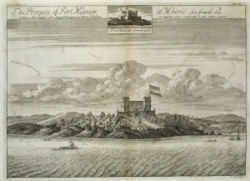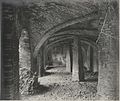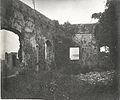| Fort Nassau | |
|---|---|
| Part of Dutch Gold Coast | |
 Fort Nassau | |
| Location | |
| Coordinates | 5°08′00″N1°12′00″W / 5.133333°N 1.2°W |
| Site history | |
| Built | 1612 |
| Garrison information | |
| Occupants | Netherlands (1612-1868) |
| Part of | Forts and Castles, Volta, Greater Accra, Central and Western Regions |
| Criteria | Cultural: (vi) |
| Reference | 34 |
| Inscription | 1979 (3rd Session) |
Fort Nassau, near Moree, Ghana, was the first fort that the Dutch established on what would become the Dutch Gold Coast. Because of its importance during the early European colonial period in West Africa and its testimony to the African gold trade and the Atlantic slave trade, the fort was inscribed on the UNESCO World Heritage list in 1979 (along with several other castles and forts in Ghana). [1]






